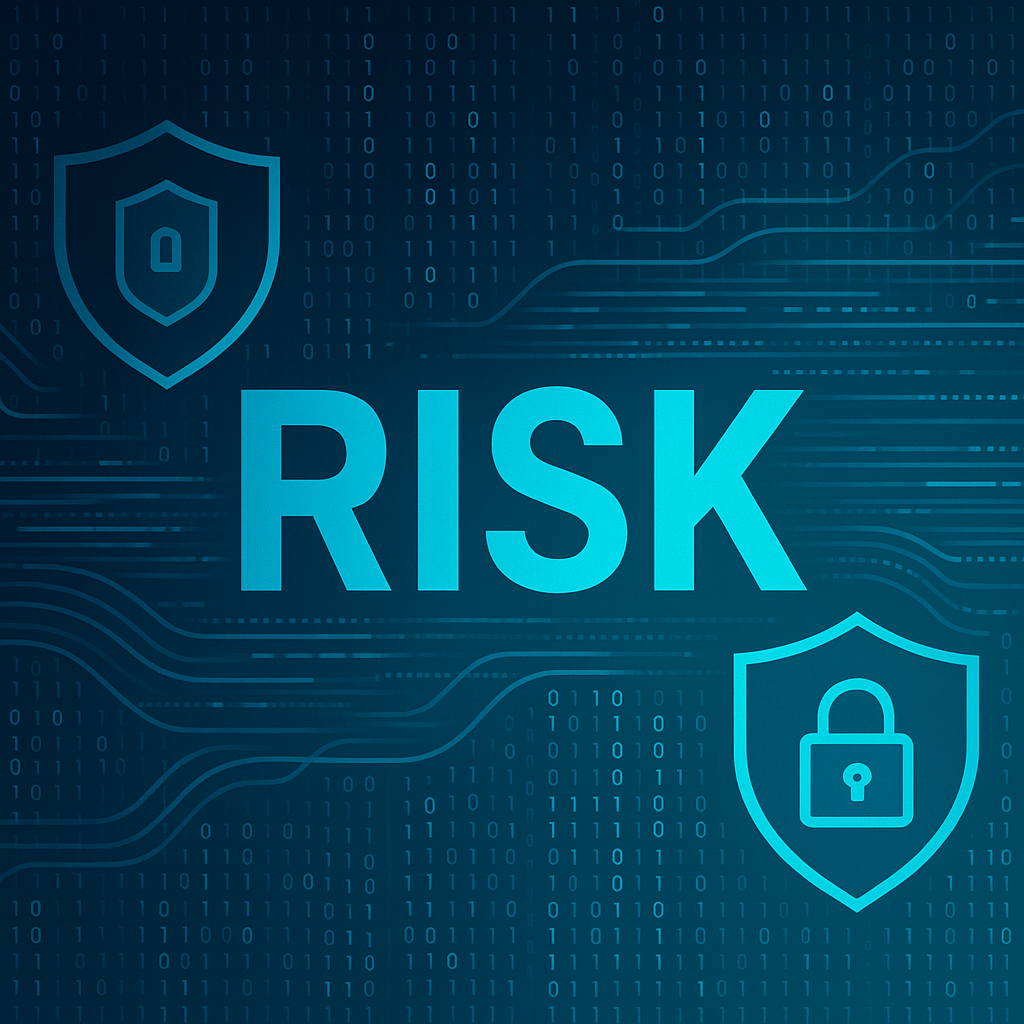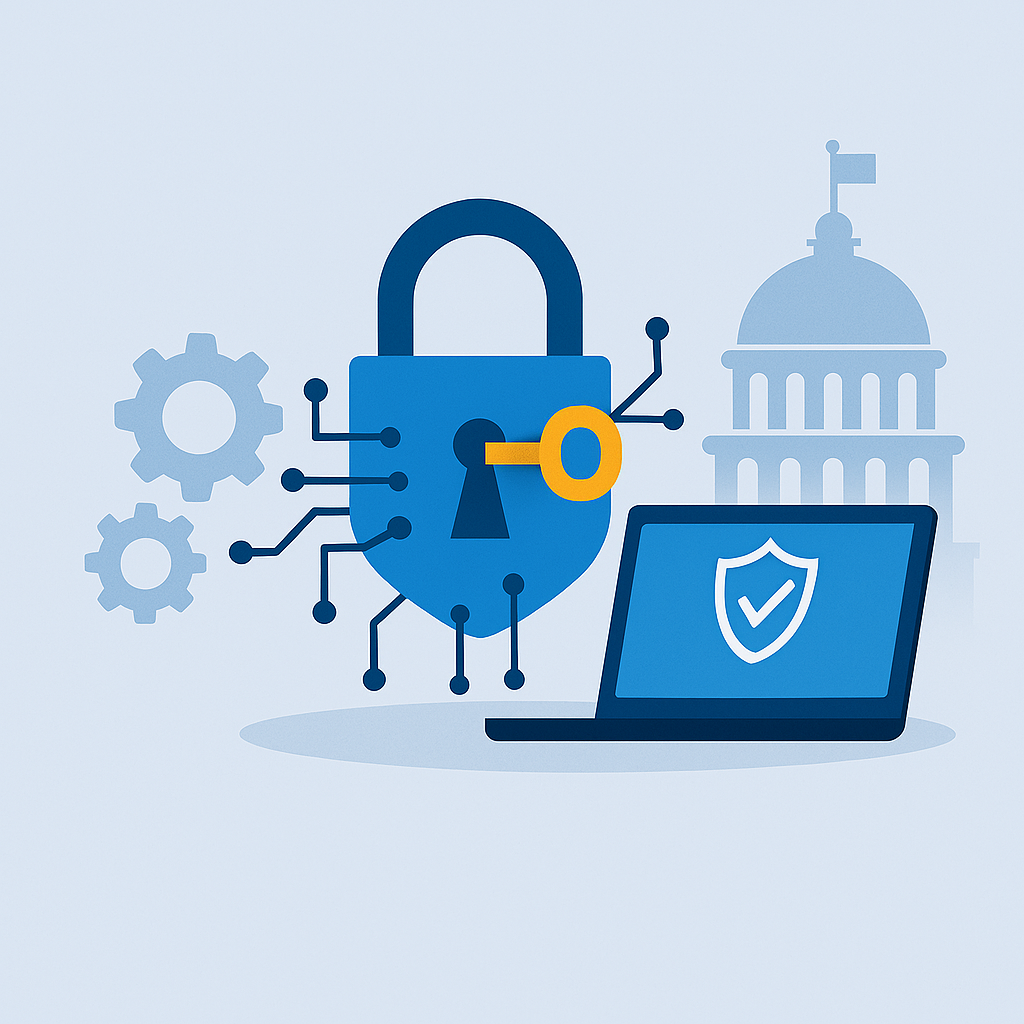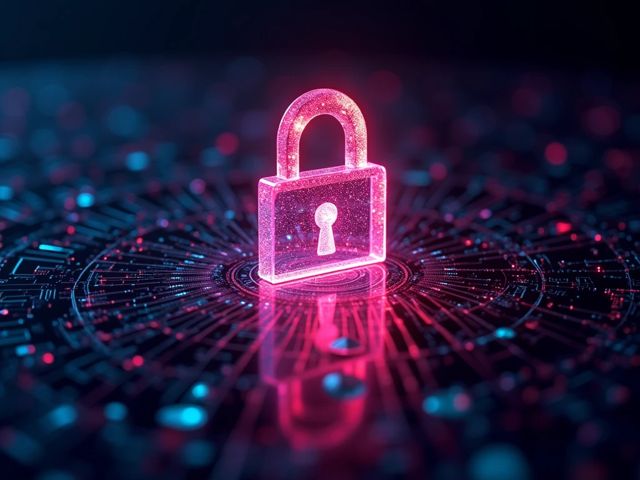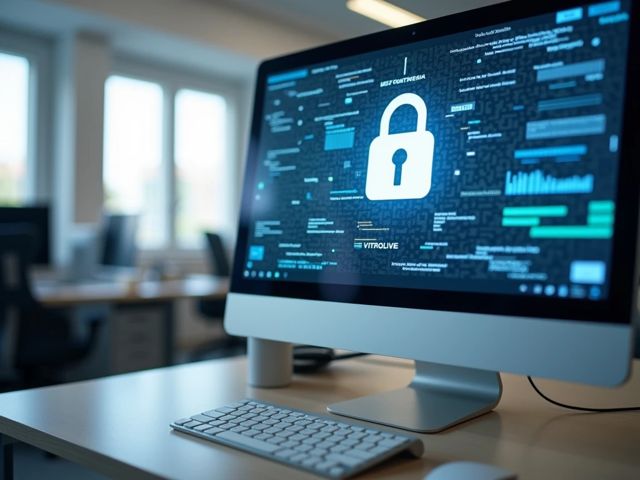The NIST Cybersecurity Framework offers voluntary guidelines that help organizations manage and reduce cyber risk using six core Functions: Identify, Govern, Protect, Detect, Respond, and Recover. CSF 2.0 further emphasizes governance and supply chain security, aiding in faster threat detection and response.
Introduction

Are you worried about escalating cyber threats to your organization’s data and systems? The NIST Cybersecurity Framework (CSF) might just be your roadmap to staying secure. Recommended by agencies such as the Federal Trade Commission, it adapts to businesses large and small by providing practical guidelines that fit individual risk levels.
Overview
Developed by the National Institute of Standards and Technology, the CSF is voluntary but widely trusted. It helps teams communicate about cyber risk, set security priorities, and use resources wisely. The framework originally focused on five main Functions—Identify, Protect, Detect, Respond, and Recover—and in Version 2.0 adds the sixth Function, Govern. Together, these Functions create a structured, industry-agnostic approach to cybersecurity.
Why It Matters
Today’s cyberattacks are more sophisticated than ever, and organizations of any size can be targets. By following the CSF, you gain a common language for discussing risk, greater clarity on responsibilities, and the ability to integrate cybersecurity into strategic decisions. The new Govern function in Version 2.0 underscores oversight and accountability, making top-level leaders part of the security conversation. This holistic approach helps reduce downtime, protect trust, and keep up with evolving threats. Detailed guidance and examples are found in the official publication and a dedicated small business guide.
What is a Cyber Security Framework?
Understanding the Purpose
A cybersecurity framework helps organizations of all kinds systematically identify, assess, and manage risks. It introduces common terminology and goals, so everyone—from non-technical executives to IT staff—works toward the same objectives. This structure can be tailored to specific threats and compliance obligations, making it as helpful for a local retailer as it is for a global enterprise.
Key Principles
Among the most recognized frameworks is the one developed by NIST. Its latest iteration, often referred to as CSF 2.0, is designed to:
• Align cybersecurity with overall business objectives.
• Adapt to different organizational sizes and regulatory requirements.
• Provide clear Functions—Identify, Govern, Protect, Detect, Respond, and Recover—that guide security activities at every level.
Practical Outcomes
By categorizing a current security posture, planning improvements, and measuring progress, an organization can adopt continuous risk management. This fosters collaboration across departments and with external partners. For smaller teams, the FTC’s business guidance provides accessible how-tos, while larger entities can expand the same framework to fit enterprise needs. CSF 2.0, scheduled for release in February 2024, adds strengthened governance and supply chain measures, aiming to help organizations detect and handle threats faster.
What is the NIST Cybersecurity Framework (CSF)?

A Brief Overview
Developed by the National Institute of Standards and Technology, the CSF is a flexible set of best practices to help organizations understand, manage, and reduce cyber risk. Version 2.0 (releasing on February 26, 2024) continues its practical risk-based approach, now spotlighting governance and supply chain security. It is voluntary, making it easy for teams to align existing security processes with a proven structure. Organizations looking for a quick start can consult the small business resources.
Core Components
At its heart, the Framework guides cybersecurity tasks through six key Functions: Govern, Identify, Protect, Detect, Respond, and Recover. These Functions can be customized into Profiles that map your current and target states. Maturity Tiers—ranging from ad-hoc to fully adaptive—offer a sense of how well your organization manages risk over time.
Relevance Across Sectors
CSF applies to diverse environments—from small nonprofits to major corporations—precluding a one-size-fits-all technology requirement. Instead, it emphasizes desired outcomes, enabling adaptation to specialized needs in industries like finance, manufacturing, and healthcare. Upcoming guidance such as NIST CSWP 29 expands on governance, supply chain risk management, and enterprise risk strategies.
NIST CSF Core Functions

These six Functions form the central toolkit for building a resilient cybersecurity program:
Identify
Lay a solid foundation by cataloging hardware, software, and data. Develop policies that define roles, responsibilities, and asset management. Identifying weak points helps direct resources efficiently. For tips on getting started, especially as a smaller organization, see the Small Business Quick Start Guide.
Govern
Added in CSF 2.0, Govern emphasizes executive-level oversight, strategy, and accountability. It ensures that cybersecurity priorities align with overall business goals and that leadership remains actively involved in risk management decisions.
Protect
Safeguarding critical data is vital. Techniques include:
- Enforcing access controls.
- Encrypting confidential information.
- Training employees on secure practices.
- Backing up systems regularly.
Review official recommendations in the NIST Cybersecurity Framework (CSF) 2.0 publication.
Detect
Even strong defenses can be breached. Detect focuses on continuous monitoring for suspicious activities—unusual network traffic or unauthorized actions—so you can respond quickly and effectively.
Respond
Once an incident is detected, organizations need a swift response to contain threats and protect operations. This includes clear communications, fostering collaboration between internal and external stakeholders, and preserving forensic evidence for later analysis. See the FTC’s guidance for more details.
Recover
Recovering from an attack involves restoring systems, informing all affected parties, and documenting lessons to strengthen future defenses. This Function ensures you resume normal operations with improved resilience. More details are in the NIST CSF homepage.
What is NIST CSF 2.0?

An Expanded Approach to Cyber Risk
Arriving in 2024, NIST CSF 2.0 marks its first major revision in a decade. It keeps the familiar Functions—Identify, Protect, Detect, Respond, and Recover—and adds Govern, spotlighting executive involvement and accountability. Supply chain security also receives extra attention, encouraging stronger verification of third-party providers and shared services.
Strengthening Governance and Scope
• The new Govern function drives security decision-making from the top, making executives responsible for policies and oversight.
• Emphasis on supply chain risk helps organizations evaluate partners and hosted tools more thoroughly.
According to the NIST announcement, upgrading to CSF 2.0 provides clearer guidelines for managing cyber risk and responding to evolving threats.
Real-World Use
Early adopters have reported boosted “maturity scores” with CSF 2.0. For example, Fireblocks surpassed the industry benchmark by focusing on policies, training, infrastructure resilience, and incident analysis—all crucial for complex operations.
Practical Takeaways
Even organizations using CSF 1.1 must update accountability structures to address broader risks. Embracing the Govern function and paying attention to emerging threats helps teams secure resources, expedite incident response, and improve overall cybersecurity performance.
Implementing the NIST Framework Core

Overview of the Outcome-Based Approach
The Framework Core is built around outcome-oriented Categories and Subcategories, rather than prescribing specific tools. It provides flexibility, aligning with established standards and best practices. Details on its background are available at NIST’s official background page.
Key Steps to Implementation
Most organizations begin by mapping crucial assets and services to each Function. Then they set goals that align with the broader mission, creating a Current Profile (where they are now) and a Target Profile (where they want to be). This involves:
- Defining clear security objectives tied to the mission.
- Assigning cybersecurity roles and responsibilities.
- Creating policies based on identified risks.
- Using continuous monitoring and event analysis to measure progress.
You can find implementation examples for NIST CSF 2.0 that illustrate how to apply these steps in real-world scenarios.
Key Points
Risk assessments guide which Categories and Subcategories to focus on first, such as Asset Management (ID.AM) or Incident Response (RS.MA). For specialized industries, like commercial facilities, sector-specific guidance illustrates how to adapt the Framework Core to unique operational settings.
Driving Continuous Improvement
Security postures must evolve with shifting threats. The Framework Core helps organizations revisit Profiles regularly, refine incident response, and adjust policies. This cycle ensures that cybersecurity efforts stay aligned with both the changing threat landscape and the organization’s current goals.
NIST CSF Compliance

Understanding the Compliance Journey
Compliance with NIST CSF 2.0 entails more than meeting checklist items. It unites people, processes, and technology under the six core Functions—Govern, Identify, Protect, Detect, Respond, and Recover. Each Function points to key outcomes and remains flexible so you can align controls with your organization’s unique needs.
Practical Steps Toward Alignment
Many teams begin by creating a Current Profile that reveals existing gaps, then a Target Profile that outlines ideal outcomes. Maturity Tiers move from Partial (least mature) to Adaptive (most mature). Common milestones include:
• Building a governance model that assigns clear risk management responsibilities.
• Maintaining up-to-date asset inventories.
• Enforcing technical safeguards such as access controls and backups.
• Continuously monitoring for anomalous activity.
• Establishing a thorough incident response plan.
• Creating a recovery playbook to restore operations swiftly.
How Cypago Simplifies Compliance
Cypago helps unify these practices under one platform by automating evidence collection, tracking evolving requirements, and centralizing control management. Its features—like compliance automation, continuous control monitoring, and support for NIST CSF 2.0—enable real-time alignment with framework controls. Plus, multiple business entity support makes it easier for organizations to stay compliant across different units.
Driving Long-Term Risk Management
Ultimately, NIST CSF compliance should grow with your organization’s risks and goals. Using this framework not only addresses current threats but also strengthens your governance over time. With an automated, integrated approach, teams can confidently manage their security posture while minimizing disruption as regulations and cyber threats evolve.
FAQ
What is the NIST Cybersecurity Framework (CSF)?
The NIST Cybersecurity Framework (CSF) is a flexible set of best practices developed by the National Institute of Standards and Technology to help organizations understand, manage, and reduce cyber risk. It includes six key Functions: Govern, Identify, Protect, Detect, Respond, and Recover, which can be customized to fit different organizational needs.
Why is the NIST CSF important?
The framework provides a common language for discussing cybersecurity risks, aligning security priorities, and integrating cybersecurity into strategic decisions. It helps reduce downtime, protect trust, and address evolving threats while being adaptable to organizations of different sizes.
What are the core Functions of the NIST CSF?
The core Functions of the NIST CSF are Identify, Govern, Protect, Detect, Respond, and Recover. They guide cybersecurity practices, helping organizations build a resilient security program by aligning security efforts with business objectives and improving governance and risk management.
How does the new Govern function enhance the framework?
The Govern function, introduced in Version 2.0, emphasizes executive-level oversight and accountability. It ensures that cybersecurity priorities align with business goals and that leadership actively participates in risk management decisions, thereby integrating cybersecurity into the overall strategic framework.
How can organizations implement the NIST CSF?
Implementation begins with mapping crucial assets and services to each Function. Organizations should define security objectives, assign roles and responsibilities, create policies based on risks, and use continuous monitoring to measure progress. This approach aligns security efforts with the broader mission.
What role does Cypago play in NIST CSF compliance?
Cypago simplifies NIST CSF compliance by automating evidence collection, tracking evolving requirements, and centralizing control management. It supports compliance automation, continuous control monitoring, and offers solutions for aligning with NIST CSF 2.0, helping organizations manage security posture effectively.
What is the difference between NIST CSF Versions 1.1 and 2.0?
NIST CSF 2.0, releasing in 2024, adds the Govern function to the existing Identify, Protect, Detect, Respond, and Recover Functions. It also places extra emphasis on supply chain security, encouraging better verification of third-party providers and shared services to handle evolving threats more effectively.






















